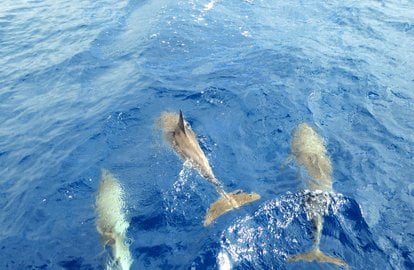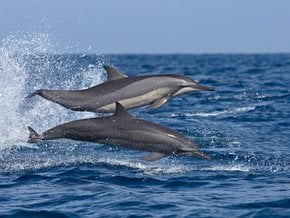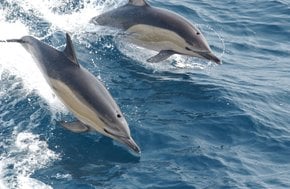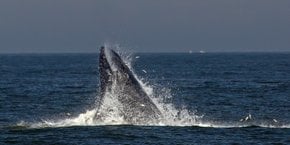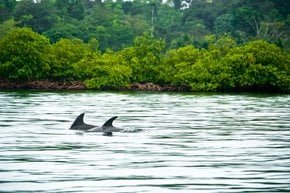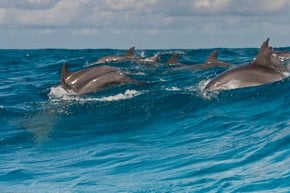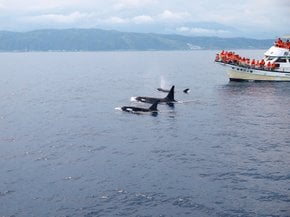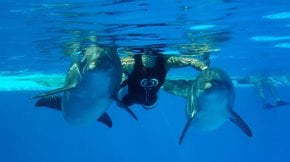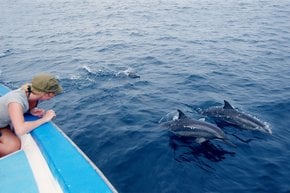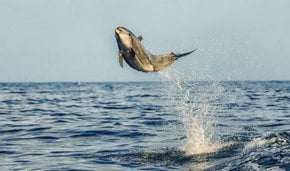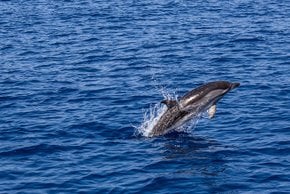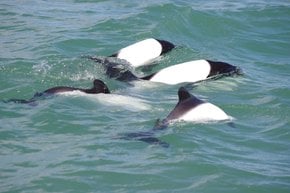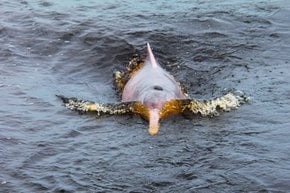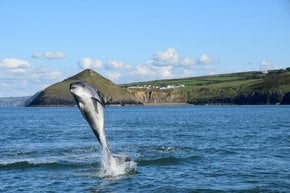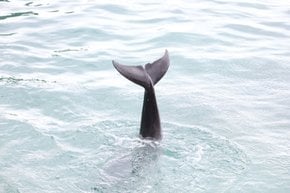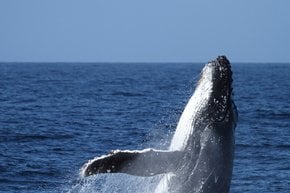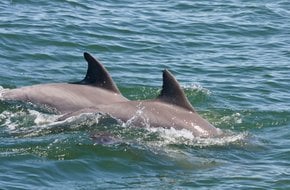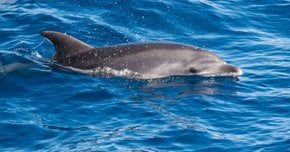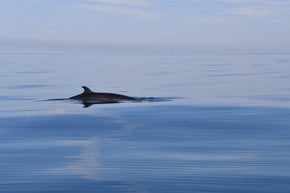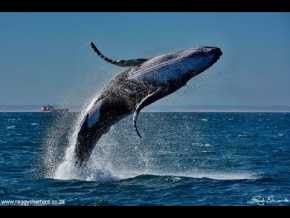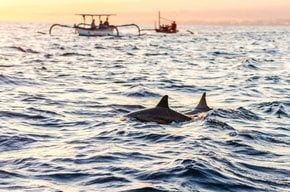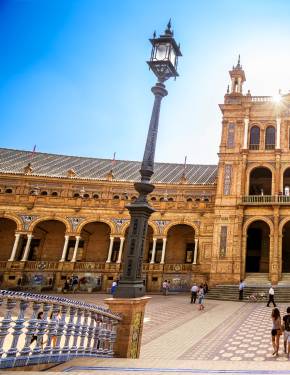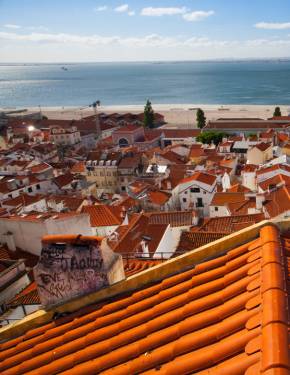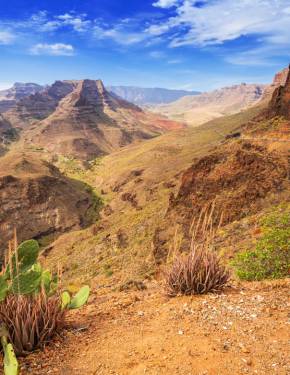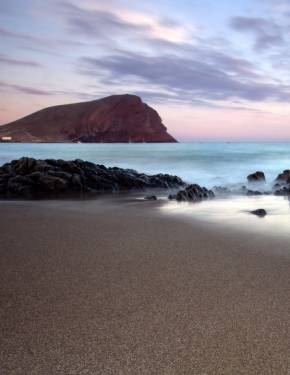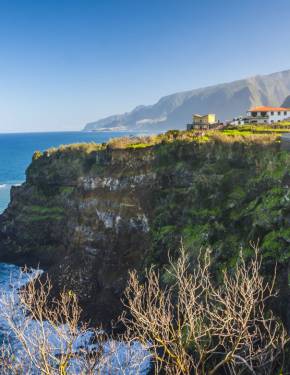Whale and Dolphin Watching in Canary Islands 2025-2026
Get closer to the beautiful creatures of the ocean depths. The Canary Islands is the place to go if you want to meet whales and dolphins
Best time: December–May
One of the most exciting experiences offered in the Canary Islands, a Spanish archipelago off the northwest coast of Africa, is a whale and dolphin-watching expedition. This sea trip will certainly stay in your memory for a long time. The mild climate and beautiful crystal clear blue waters are the perfect habitats for lots of different dolphin and whale species. You can spot resident species such as bottlenose dolphins, pilot whales, and sperm whales, together with up to 24 other sea mammals that migrate through Canarian waters at different times of the year.
Whale-watching Season in Canary Islands
The best months for whale watching in the Canary Islands are between November and February, when large migratory species such as pilot whales, sperm whales, and even the occasional humpback pass through the region. Whether you're a seasoned marine enthusiast or a casual traveler, a whale-watching excursion is a must when visiting the Canary Islands.
Tenerife
Tenerife, the largest of the Canary Islands, is perhaps the most famous location for whale watching. The waters between Tenerife and the neighboring island of La Gomera are home to resident populations of pilot whales and bottlenose dolphins, meaning you can spot them any time of the year. Many tour operators offer excursions from the port of Los Cristianos, Los Gigantes, and Puerto Colón. The southwest coast of Tenerife is considered to be the best spot for this activity, where colonies of pilot whales and dolphins can be found. White Tenerife offers three-hour whale and dolphin-watching tours on eco-customized catamaran for €44.26. Neptuno offers tours on a yacht departing from Los Cristianos for €60 per person. These tours typically include refreshments, some food, educational commentary, and guaranteed sightings of either whales or dolphins.
La Gomera
Just a short ferry ride from Tenerife, La Gomera offers a quieter, more intimate whale-watching experience. The waters around this island are less crowded, and with the island's protected marine areas, you're likely to encounter a variety of species. Oceano Whale Watching, based in Valle Gran Rey, is one of the top operators here, offering eco-friendly tours with a focus on conservation and education. Tours are priced from €29 to €44, departing twice per day. Maximum 10 guests are booked per excursion and boat.
El Hierro
For those seeking a more off-the-beaten-path adventure, El Hierro is the perfect choice. Known for its pristine waters and rich biodiversity, this island is a sanctuary for a variety of whale species. Tour operators, such as SEREA, offer whale-watching trips from the port of La Estaca on Beneteau Oceanis Clipper 42.3' (12,6m). Tickets are about €60 per person, and these tours often include snorkeling stops to explore the underwater life of the island.
Lanzarote
Lanzarote, with its dramatic volcanic landscapes and calm seas, is another fantastic location for whale watching. Sea Safaris offer family-friendly excursions from Puerto Calero, with prices around €45-€55 per person. Other operators offer charter tours that often include other activities, such as sailing and swimming in secluded coves, making them ideal for those looking to combine whale watching with a relaxing day at sea.
In addition to whales, the Canary Islands are home to several species of dolphins, which are frequently spotted during whale-watching tours. Bottlenose dolphins are the most common, and their playful nature often delights passengers as they swim alongside boats, jumping and diving in the waves. Other species, such as Atlantic spotted dolphins and striped dolphins, are also seen, adding an extra layer of excitement to the experience. With its stunning landscapes and rich marine life, whale and dolphin watching in the Canary Islands offers an unforgettable adventure for travelers of all ages.

